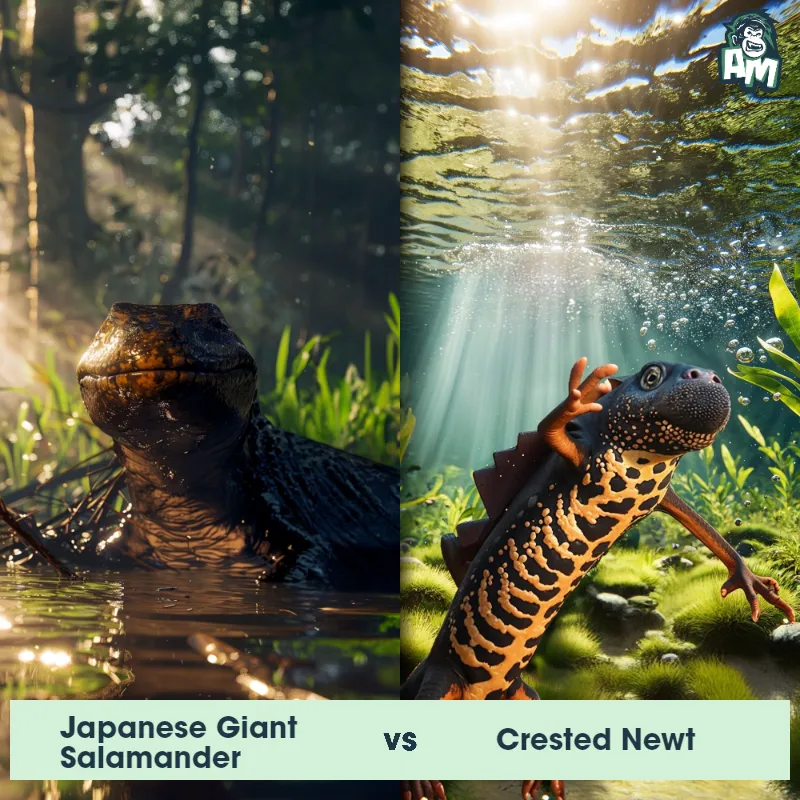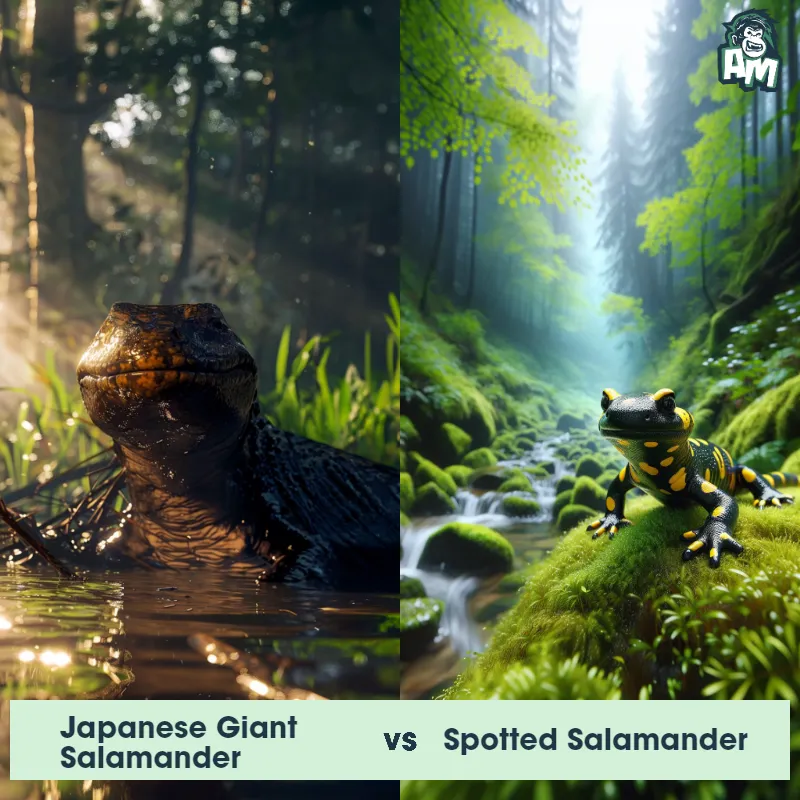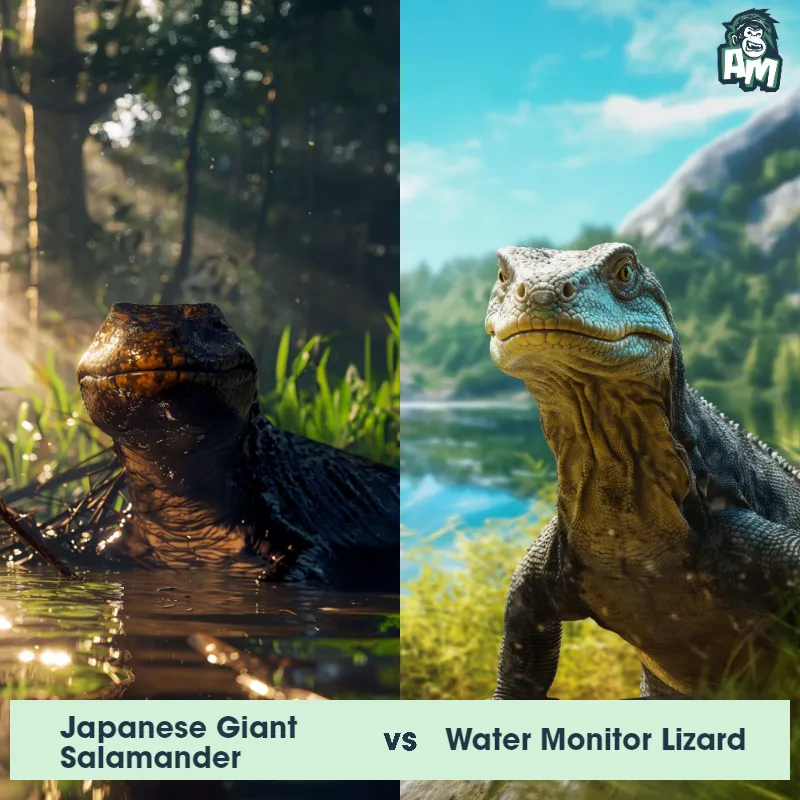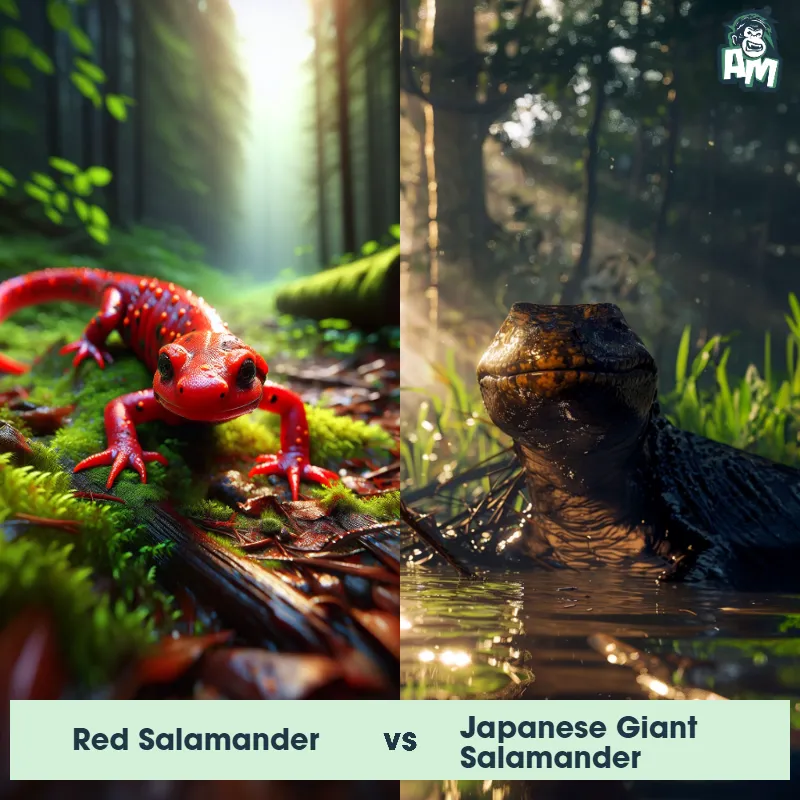The Japanese Giant Salamander
The Japanese Giant Salamander, known for its large size and primitive appearance, can reach lengths of up to 5 feet and weigh over 50 pounds. It has a flattened body, loose skin, wrinkled appearance, small eyes, and external gills. These nocturnal amphibians are carnivorous, feeding on insects, fish, and small mammals in freshwater habitats in Japan.
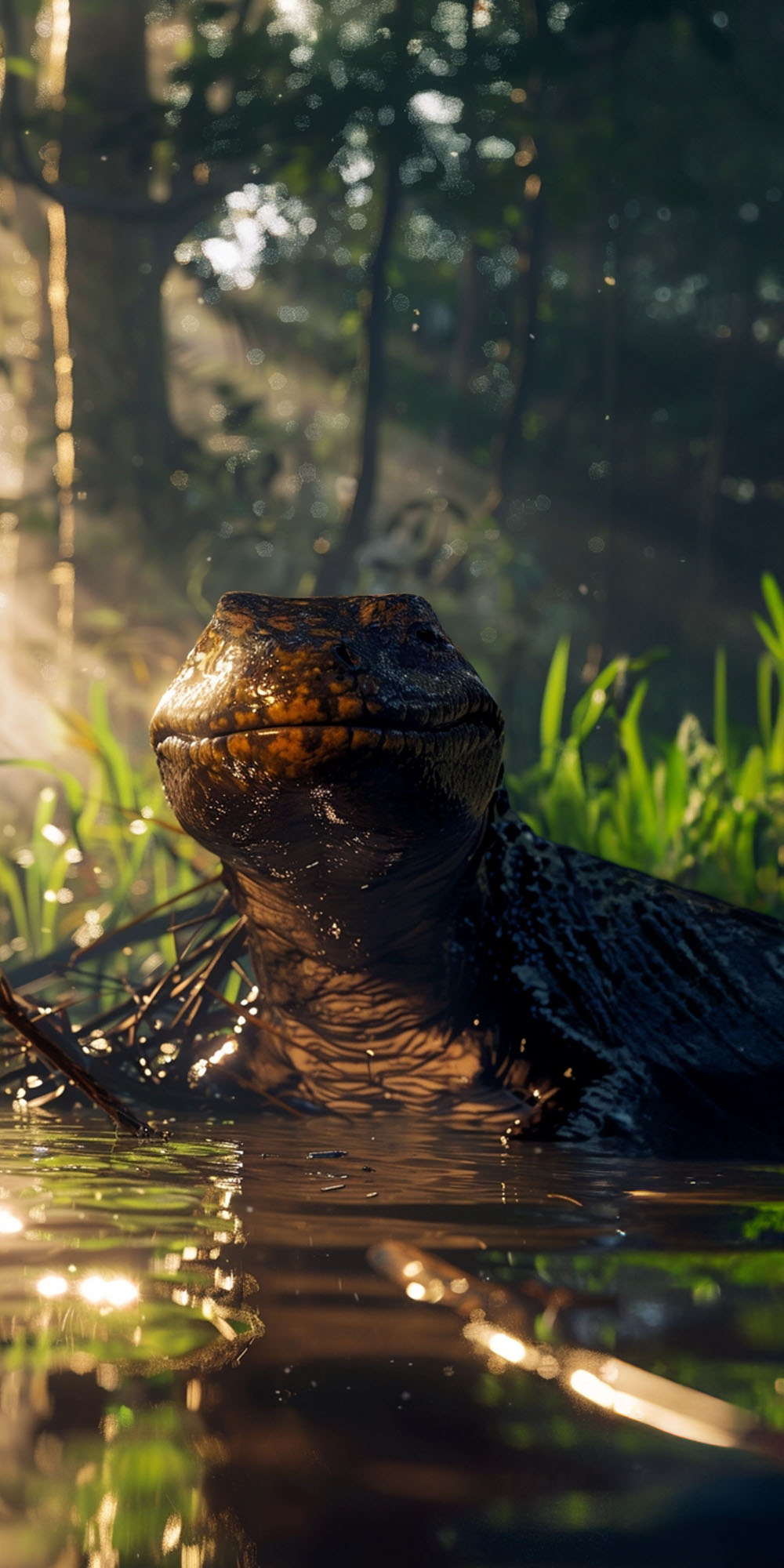
| Japanese Giant Salamander | |
|---|---|
| Size | Up to 5 feet (1.5 meters) |
| Weight | Up to 55 pounds (25 kilograms) |
| Speed | 3mph (4.8km/h) |
| Key Strength | Powerful jaws for capturing prey |
| Biggest Weakness | Slow movement on land |
| Scientific Name | Andrias japonicus |
| Family | Cryptobranchidae |
| Habitat | Freshwater rivers and streams with rocky bottoms |
| Geography | Japan |
| Diet | Fish, insects, small mammals, aquatic invertebrates |
| Lifespan | 50 years - 70 years |

The Japanese Giant Salamander
The Japanese Giant Salamander, known for its large size and primitive appearance, can reach lengths of up to 5 feet and weigh over 50 pounds. It has a flattened body, loose skin, wrinkled appearance, small eyes, and external gills. These nocturnal amphibians are carnivorous, feeding on insects, fish, and small mammals in freshwater habitats in Japan.
Fun Fact: The Japanese Giant Salamander is one of the largest amphibians in the world, second only to the Chinese Giant Salamander.
| Japanese Giant Salamander | |
|---|---|
| Size | Up to 5 feet (1.5 meters) |
| Weight | Up to 55 pounds (25 kilograms) |
| Speed | 3mph (4.8km/h) |
| Key Strength | Powerful jaws for capturing prey |
| Biggest Weakness | Slow movement on land |
| Scientific Name | Andrias japonicus |
| Family | Cryptobranchidae |
| Habitat | Freshwater rivers and streams with rocky bottoms |
| Geography | Japan |
| Diet | Fish, insects, small mammals, aquatic invertebrates |
| Lifespan | 50 years - 70 years |
Japanese Giant Salamander Matchups
We use AI to simulate matchups between the Japanese Giant Salamander and other animals. Our simulation considers size, strength, and natural predatory behaviors to determine the most likely outcome.
Japanese Giant Salamander: Diet, Predators, Aggression, and Defensive Behaviors
What do Japanese Giant Salamanders eat?
Japanese Giant Salamanders are carnivorous amphibians that primarily feed on insects, fish, worms, and smaller aquatic creatures. They are nocturnal hunters and use their keen sense of smell to locate prey in rivers and streams.
Do Japanese Giant Salamanders have any predators?
While Japanese Giant Salamanders are apex predators in their aquatic habitats, they do face threats from animals like otters, birds of prey, and large fish. However, their main predators are humans, who hunt them for food and traditional medicine.
Are Japanese Giant Salamanders aggressive?
Japanese Giant Salamanders are generally solitary animals and can exhibit aggressive behavior towards each other, especially during territorial disputes. They may also display aggression towards intruders or threats to their territory.
Do Japanese Giant Salamanders fight?
Japanese Giant Salamanders are known to engage in physical fights with rival salamanders, especially during the breeding season when competition for mates and territory is high. These fights can involve biting, tail thrashing, and pushing each other.
How do Japanese Giant Salamanders defend themselves?
Japanese Giant Salamanders have several defense mechanisms to protect themselves from predators and rivals. They can produce a toxic secretion from their skin when threatened, which can deter potential attackers. They also have strong jaws with sharp teeth for biting and lunging at threats.
What is the biggest weakness of Japanese Giant Salamanders in a fight?
The biggest weakness of Japanese Giant Salamanders in a fight is their slow movement on land. While they are well-adapted to aquatic environments, they are relatively clumsy and slow on land, which can make them vulnerable to faster predators or rivals during confrontations outside the water.
Fun Fact: Japanese Giant Salamanders have a lifespan of up to 50 years, making them one of the longest-living amphibians.
Fun Fact: Despite their size, Japanese Giant Salamanders are quite elusive and are threatened by habitat loss, pollution, and overhunting, putting them at risk of extinction in the wild.



